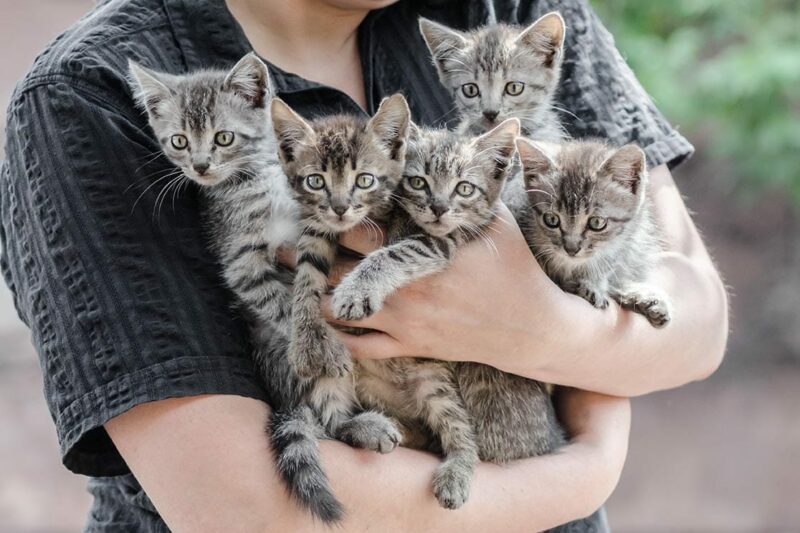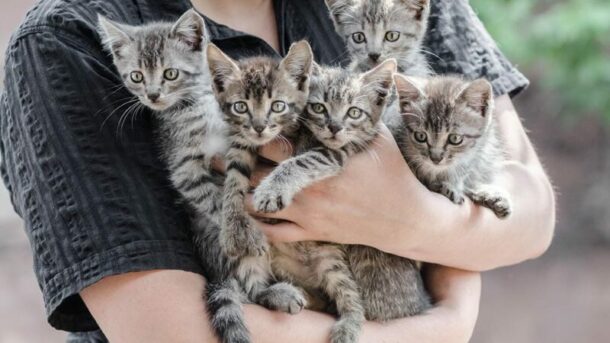In the corners of our cities, we often spot them—stray cats with no homes. They live outdoors, facing hunger, illness, and the risk of accidents. If you want to help these poor little creatures but don’t know where to start, this stray cat rescue guide will give you practical, science-backed steps to take action.

I. When You Spot a Stray Cat: First Step – Stay Calm, Observe, and Assess
Don’t rush to approach a stray cat when you see one. First, you need to assess its situation:
- Check its mental state: Is it alert but healthy, or does it look weak, injured, or have thick discharge from its eyes or nose?
- Gauge its comfort with humans: Is it willing to get close to people? This is crucial for deciding whether to trap it or calm it down later.
- Look for special conditions: Is it pregnant, nursing kittens, or does it have an “ear-tip” (a small cut on the ear, which means it’s already been spayed or neutered)?
Key Tip: Safety comes first! Never try to catch a stray cat with your bare hands—this avoids scratches or bites.
II. The Scientific Rescue Process: TNR – The Most Effective Long-Term Solution
For healthy stray cats, TNR is the internationally recognized most humane and effective method. TNR stands for Trap, Neuter, Return.
- Trap: Use a professional humane trap. Put fragrant food (like canned cat food) inside, then wait patiently for the cat to enter and trigger the trap. This is the safest and most successful way to catch a stray.
- Neuter: This is the core of TNR. Take the cat to a reliable vet clinic for spaying (for females) or neutering (for males). Sterilizing stray cats controls their population at the root, reduces fighting and loud meowing, and improves their overall health.
- Return: After the surgery, wait until the cat is fully awake, then release it back to its original habitat. Make sure the area is safe, and if possible, keep providing food and water for it afterward.
The advantage of TNR is that it stabilizes and gradually reduces the local stray cat population humanely. It avoids the ethical issues of euthanasia and is a truly sustainable way to manage stray cats.
III.How to Successfully Find an Adoptive Home for a Stray Cat
For strays that are friendly to humans and suitable for family life, finding them a permanent home is an even better choice.
- Temporary placement: First, take the cat home or find a foster family. Give it a quiet, separate space to adjust to the new environment.
- Health check and vaccinations: Take the cat to a vet for a full health exam, deworming, and vaccinations. This shows responsibility to both the cat and its future adopter.
- Post adoption information:
- Take appealing photos: Make sure the cat’s eyes look bright and the background is clean.
- Write a sincere adoption post: Share the cat’s story and highlight its good personality traits.
- Spread the word through multiple channels: Use local stray cat rescue groups, social media, and pet adoption websites.
- Screen adopters carefully: Talk in depth with potential adopters, conduct an “adoption interview,” and if needed, visit their home. This ensures the cat goes to a responsible family that will never abandon it.
IV. Help Anyone Can Provide: Daily Acts of Care
If you don’t have the conditions to rescue a stray cat fully, you can still contribute in these simple ways:
- Provide food and water: Leave clean cat food and fresh water in a fixed spot, especially during bad weather (like heavy rain or cold winters).
- Make a simple shelter: Use a plastic storage box to DIY a basic cat house—this helps them stay warm in cold weather.
- Volunteer or donate: Contact local animal rescue shelters or nonprofits. You can give your time as a volunteer or donate money to support their work.
- Share the right ideas: Tell people around you about “adopt, don’t shop” and “own a pet responsibly for life.”
Conclusion
Every scientific rescue and every successful adoption lights a small hope for a stray cat’s life. Solving the stray cat issue needs rational attention and joint efforts from society. Let’s turn our knowledge and love into real action, and work together to create a better future for these furry wanderers.



